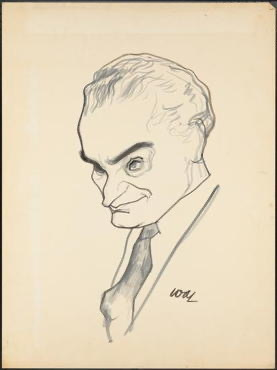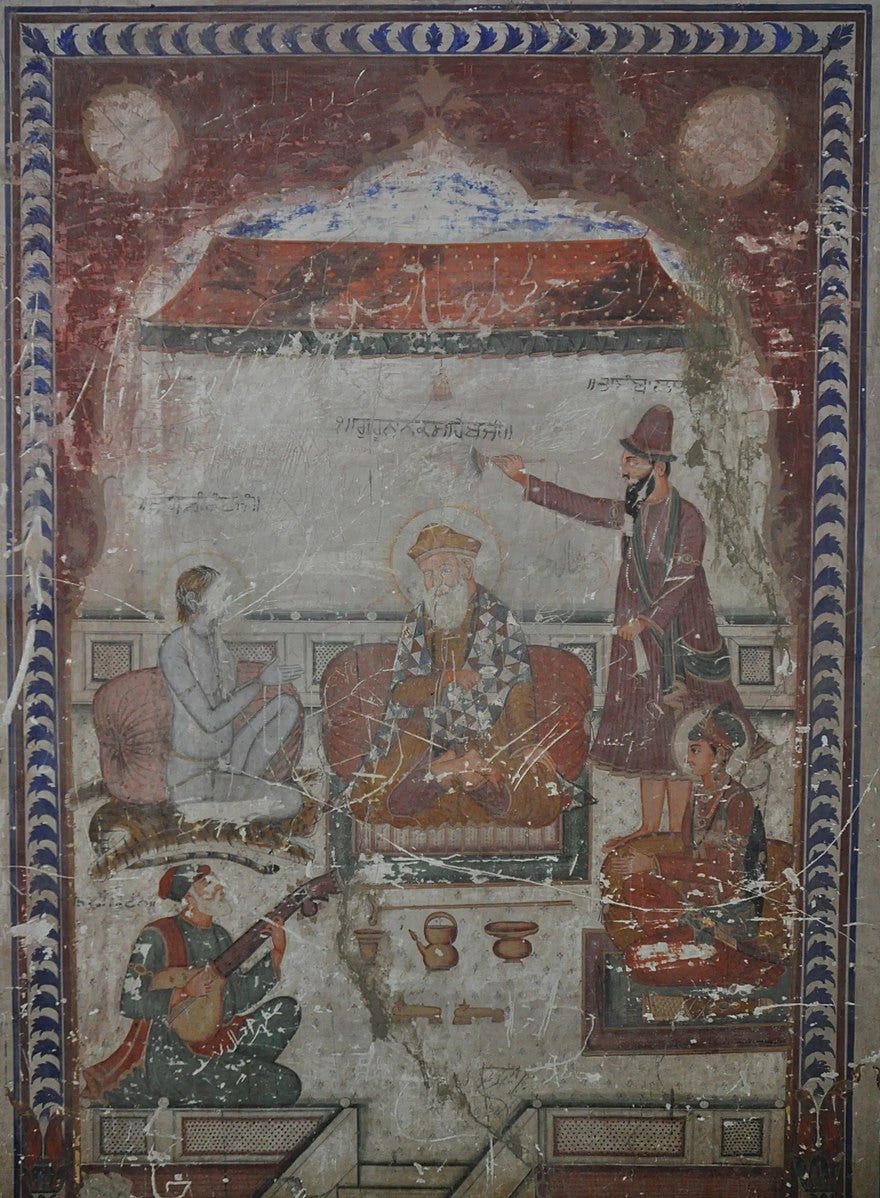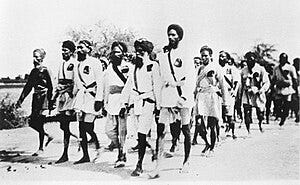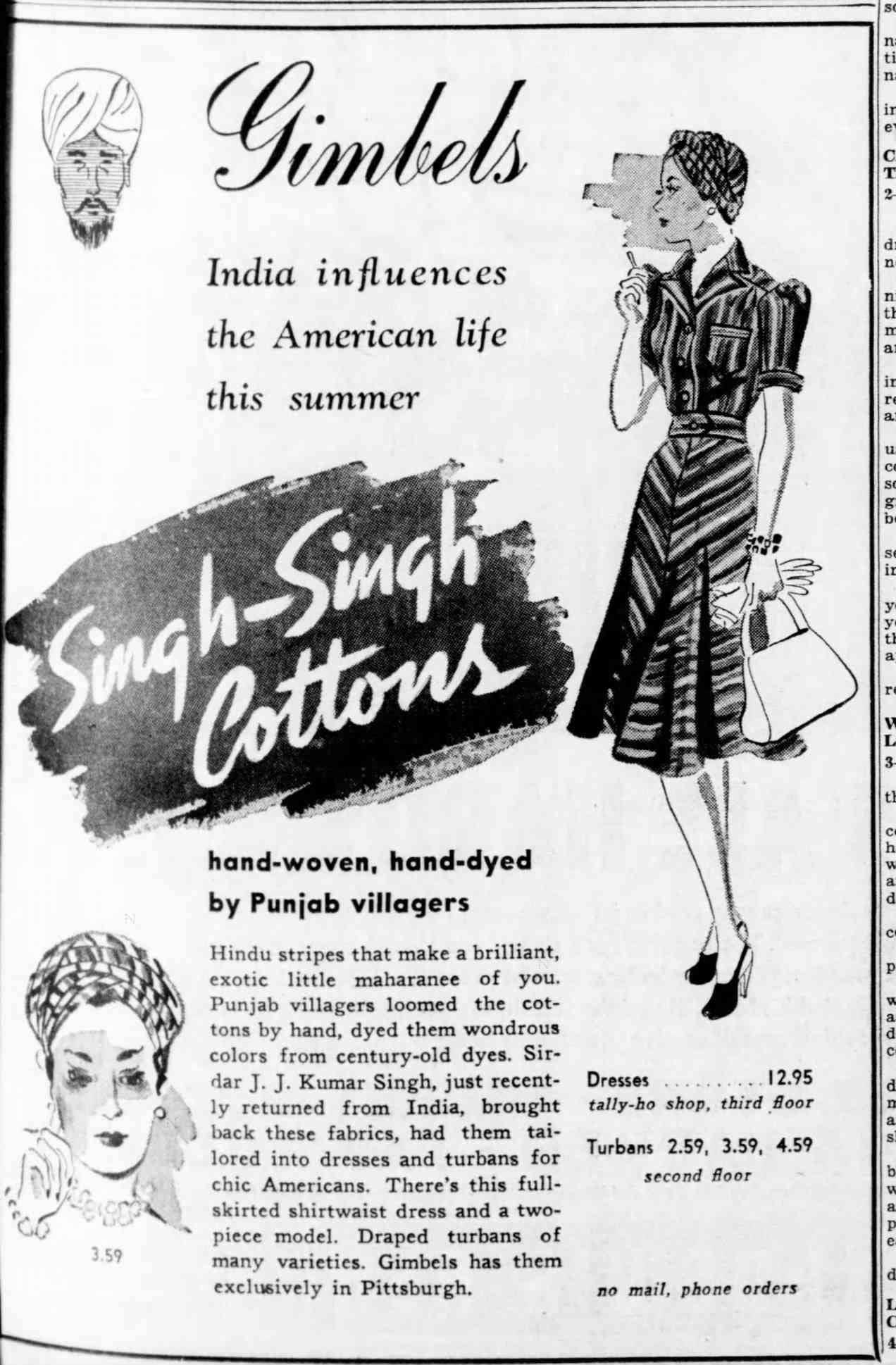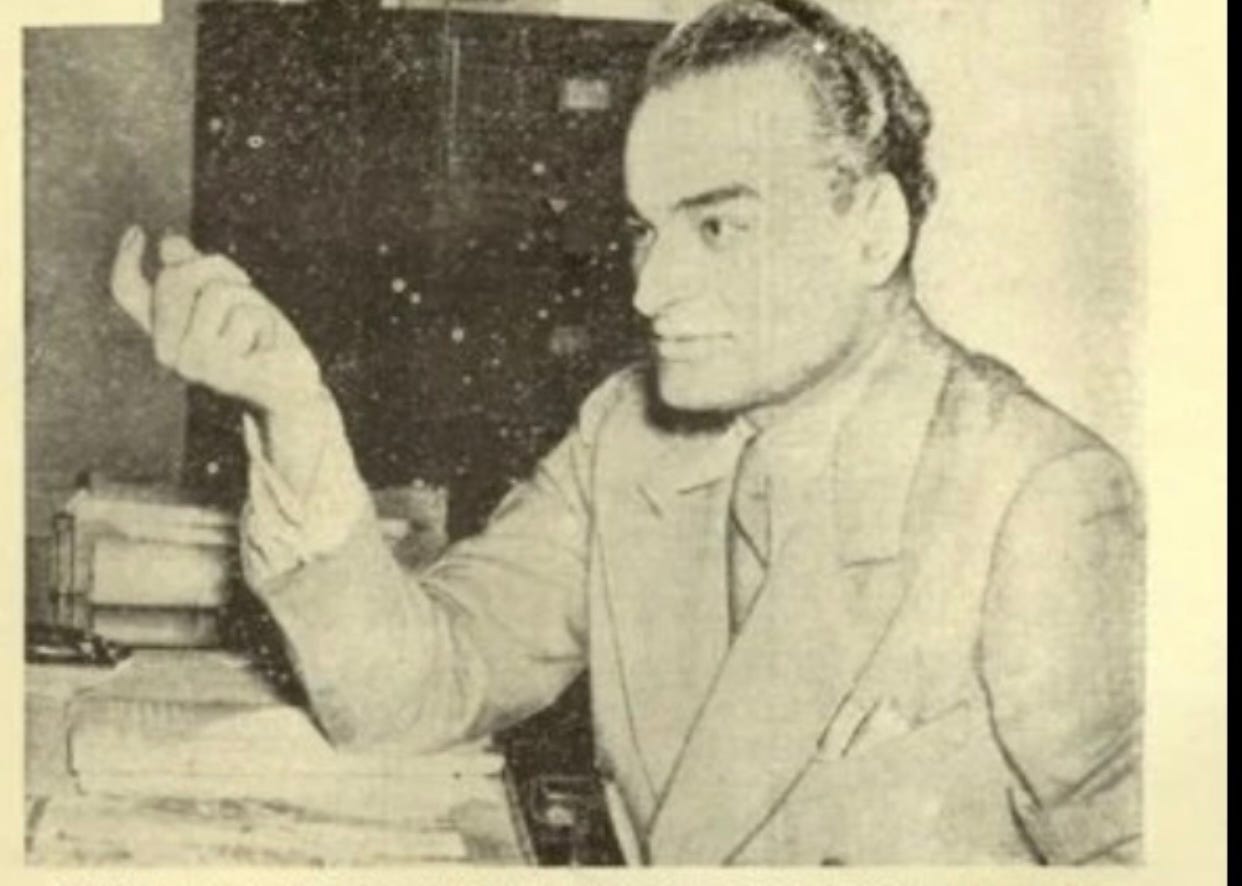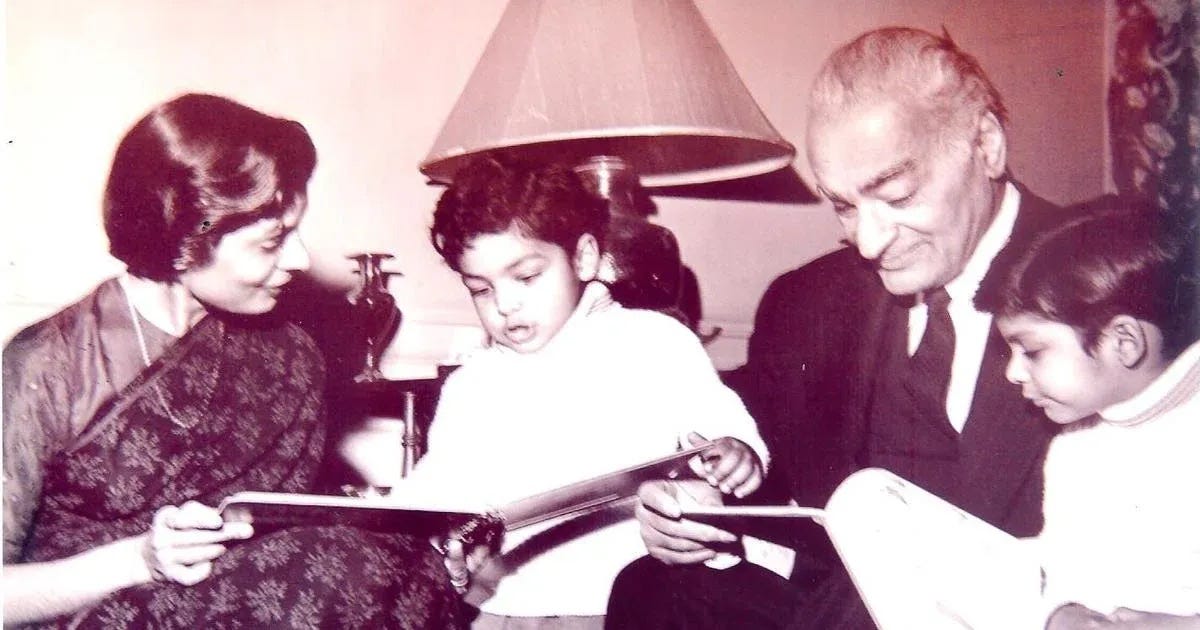The political legacy of Sirdar JJ Singh
How a suave Sikh businessman went from fighting in the Akali Movement to lobbying on Capitol Hill
“Though I believe in the efficacy of your theory, I am too weak to practice it. I am a six-foot-tall Sikh and can hardly see my way to turning the right cheek when the left one has been struck.”
-Sirdar Jagjit Singh (1897-1976), writing to Mahatma Gandhi
Early Life
Sirdar Jagjit “JJ” Singh was born on October 5, 1897 in Rawalpindi, British Punjab, the only son in the house of Sirdar Rup Singh, a judicial officer in the Indian Civil Service.1 The year of 1897 coincided with the opening of the Khalsa Dharam Pracharak Sabha in Rawalpindi, an educational institute for distilling the Singh Sabha’s mission.2 The town was already a hotbed for Sikh activity- a Singh Sabha had been established there in 1883 by the early Sabhaite Baba Khem Singh Bedi, with his pupil Bhai Avtar Singh Vahiria as its secretary.3
In this environment, JJ Singh was raised to follow the Sikh rehat religiously, taking khande ki pahul at a young age. Until he was fifteen, he rose at amritvela to recite the daily Sikh prayers and practice naam simran, and wore the Panj Kakkars (kes, kangha, kacchera, kara, and kirpan) as well. His father traveled extensively around the North-West Frontier Provinces (“NWFP”) in modern-day Pakistan to preside in the courts of the region, and the young JJ Singh would often accompany him on such trips. He later reports his mixed feelings about his father’s work in an extended profile with The New Yorker, stating, “The wider the chasm they could create between their chosen native officials and the populace, the easier it was for them to rule through us.”4
In his late teens, JJ Singh went off to study at the Lahore Commercial College, where he was exposed to the ideology of the Indian National Congress and Mahatama Gandhi. He began participating in Congress activities, and in 1919 helped lead a protest in Lahore when the colonial authorities prevented Gandhi from entering the city during the civil disobedience related to the Rowlatt Act’s passage. In the next couple of years, he would go on to form the first Congress committee in the NWFP, and then become the youngest member of the All-India Congress Committee, establishing a relationship with Gandhi in the process.5
But his activism was not just limited to Congress politics. At the same time, the Gurdwara Reform Movement was beginning to grip Punjab. Taking part in the action, JJ Singh describes the Akalis’ fight for control over the gurdwaras: “Twenty-one men in each wave, all civilians and unarmed… the police- they were Indians, led by British sergeants- would disperse our men by beating them, but we eventually won out.”6 More on the struggle of the Akalis here.
During Singh’s sojourn in Akali activism, Gandhi had been arrested after being convicted for sedition.7 Following his release in 1924, Gandhi expressed his dissatisfaction with the use of violence by JJ Singh and other young Congress members, particularly in the Lahore unrest of 1919. JJ Singh recalls,8
“He told us we weren’t fit for civil disobedience. ‘Go back to your homes and cleanse your souls,’ he said. I didn’t know how to cleanse my soul. I didn’t have one. I was like a pricked balloon, with nothing left. I had given up my studies, and I didn’t feel like spinning and praying and being really Gandhi-like.”
Coming to America
Feeling self-defeated, JJ Singh decided to study law in England. But London had other plans for him. When he arrived in 1924, the British Empire Wembley Exposition was underway, and he noticed a high demand for Indian exports amongst the English populace. Working with a cousin, he set up a shipping network for Indian silks and cloths, and by the end of 1925 he had netted eighty thousand dollars selling his wares. A representative of America’s Sesquecentennial Exposition, a similar fair to commence the next year, convinced JJ Singh to sell his wares at the event in Philadelphia. In May of 1926, he shifted to America and set up shop at the Sesquecentennial- only to end up losing fifty thousand dollars from his profits due to the fair’s unpopularity. But JJ Singh decided to remain in the country, and by the next year he had a retail store for Indian goods on Fifth Avenue of Manhattan, New York.9
Then the Great Depression hit. Singh could no longer count on the New York clientele to meet his bottom line- he became a part-time traveling salesman, journeying across the Midwest and up and down the East Coast to sell his wares. It was on one of these trips to Toronto when he decided to cut his hair. He noted, “I used to stop traffic at every corner… I was the cynosure of all eyes.” At this point he had abandoned each article of the Sikh faith save for the kara, which he wore for the remainder of his life, reasoning “religion was a good thing but that it had nothing to do with having a beard and turban.” It is perhaps worth noting here that at the time, there was not many Sikhs in America, and especially not yet in New York. Combining his new look with his natural charisma and charm, he began quickly climbing the social circles of Manhattan. Describing his experience as a “playboy,” Singh states,10
“I found myself quite in demand, and I enjoyed it, because I enjoy chic people. I liked going to night clubs and I loved dancing… I cut a good figure on the floor. I loved the theatre, and I got to know the Broadway crowd, too- Freddie March and the rest. I got along with everyone. I suppose it was because I was unusual.”
His reputation as the life of the party put him in contact with the political elite of the state of New York as well as the nation. But he didn’t have much use for such connections yet- despite his background, Singh elected to forego political activism in his first decade in America and instead live the life of a premier bachelor. This changed when he read the autobiography of Jawaharlal Nehru, Toward Freedom (1936). It so moved Singh that he sent President Roosevelt a copy through his “good friend” James Roosevelt (the President’s son), and made several trips to back to India to figure out how he could help. While there, he made contact with Nehru, who gave him his “unofficial blessing” to be the man who lobbies for the Indian cause in America.11
A Hostile Takeover
There was, in fact, a political organization of Indians in the very city of New York where JJ Singh resided- The India League of America (“the ILA”). The ILA was founded in 1918 by a fellow Punjabi, Lala Lajpat Rai, during his time in the United States as he built support for the early Indian Independence Movement.12 But twenty years later, the organization was dormant, holding “sleepy, sporadic meetings” where educated Indian intellectuals debated “lofty thoughts.” One night in 1939, JJ Singh made a surprise appearance at an ILA meeting. Following the lecture, he proposed a radical shift in the organization: forget all of this philosophical waffling, it’s time to get involved in American politics and spread the word for Indian independence. Instead of restricting membership to ethnic Indians, he argued the better policy would be an open membership that allows elite Americans to join the organization.13
Many of the existing members scoffed at such an idea, viewing Singh “as a shallow fellow who had never known his Bhagavad-Gita and who was at best a sparkling social phenomenon.”14 But in protracted battles that occurred behind closed-doors, Singh managed to pull off a coup in the ILA, becoming President in December of 1941.15 He hired managers for his businesses and quickly went to work restructuring the leadership of the organization, bringing an impressive list of Americans on the roster. Among them was Albert Einstein, then-Senator and future-Vice President Hubert Humphrey, Roger Baldwin (founder of the ACLU), Walter White (head of the NAACP), Norman Thomas (Socialist Party presidential candidate), Walter Reuther (leader of the five-million strong UAW), novelist Pearl S. Buck, and many others.16

The ILA got to work making the case for Indian independence for the American public. World War II had began, and the organization took the stance that the promise of freedom would play a great role in ensuring the motivation of the Indian troops fighting for the British. Singh explains his strategy as follows,17
“A campaign was mapped out to ‘influence the influencers.’ We decided that in order to get anywhere, we would have to get after the columnists, the radio commentators, and the rest of the blah-blah people who make public opinion, as well as those who make policy.”
Singh quickly became adept at writing to newspapers and magazines to get his ideas in the public stream, with the eminent writers in the ILA helping bring his work up to par. Using his knack for interpersonal skills, he had established a friendship with Henry Luce, the founder and developer of the magazines Time, Life, Fortune, and Sports Illustrated. It was such a relationship that allowed him to one day stride into the Times office and demand that a report of an ILA meeting be placed on the next day’s print, along with an interview of his.18
Meanwhile, the ousted former ILA leadership had began a new organization, the National Committee for India’s Freedom (NCIF), based out of Washington, DC. NCIF leaders all had advanced degrees, and among them was Anup Singh Dhillon, president of the West-Coast based Sikh League with a PhD in political science from Harvard.19 NCIF leaders were annoyed at JJ Singh’s decision to allow Americans into the ILA- they were very proud of deeming the NCIF “the only exclusively Indian organization in the United States devoted to the cause of India’s freedom.”20 An Indian-origin critic of Singh told The New Yorker,21
“He’s like a fabric dipped into a dye, and he’s taken the coloration extremely well, especially the New york coloration… He follows trends, not thoughts. Reality to him is no longer a matter of basic cause and effect but the daily unfolding of news.”
Mr. Singh Goes to Washington
Singh would himself head to the nation’s capital soon after taking over the ILA. There were several matters other than Indian independence that needed to be addressed. For one, there was the issue of U.S. aid to the 1943 Bengal Famine relief efforts.22 Singh personally lobbied members of Congress everyday for weeks to pass a statutory amendment that would allow the United States to participate in United Nation relief efforts.23 He wrote a pamphlet titled Famine in India that was circulated to the American press, and his old friends in the media were deeply critical of the American and British governments’ inaction.24 Eventually, his efforts led to the US Congress participating in the UN’s relief program-25 although no help was ever sent to India, because victims of the Bengal famine did not meet the UN’s criteria of being “victims of war.”26 Still, in remarking on his legislative victory, a columnist noted,
“Washington’s professional lobbyists are simply flabbergasted by the near-miracles that Sirdar J.J. Singh… has been performing around here lately. Through one of the most persistent, inspired, and naively skillful campaigns that any man has ever put on here, he apparently is about to win over no less an advocate than Congress itself.”
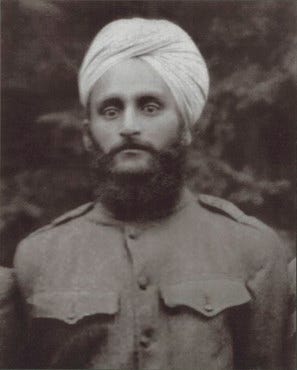
So far, Singh had mostly been concerned with lobbying for Indians in India. But there was also the issue of Indians in America who had been refused a path to citizenship following the Supreme Court’s decision in United States v. Thind (1923).27 New Indian immigrants to America had also been prohibited following the Immigration Act of 1917 barring migrants from Asia.28 This was a problem that would require convincing the House and the Senate to rewrite immigration law in order to get around the Supreme Court. Luckily, Singh had friends in high places.
One of the public figures he had brought onto the Executive Committee of the League was Representative Emmanuel Celler, a veteran New York City congressman who was pro-immigration.29 And the wife of Time magnate Henry Luce was Representative Claire Booth Luce, who had just stepped into office in 1943- and for whom he had previously arranged a trip to India as a favor. Both friends of Singh came together to write the Luce-Celler Act and introduce it in the House in 1944, as well as campaign for it in front of the Senate in a separate bill introduced by Senator William Langer of North Dakota. The proposed bill would rewrite the Naturalization Act to allow resident Indians the path to citizenship, and allow a quota of less than a hundred new Indians to immigrate every year. It may be of interest to note the different arguments by each politician at a press conference hosted by the League on May 3, 1944, no doubt influenced by the pragmatic JJ Singh:30
“Japanese propagandists daily din into the ears of the Indians that, although the Americans and the British feel that Indians are good enough to die for them by the millions, they do not feel they are good enough for freedom; they are not even good enough to allow a mere paltry 75 of them to enter our country.”
-Representative Claire Boothe Luce
“Hundreds of thousands of poor alkaline land, considered useless by the people of California, through the hard work of the people from India, were made to produce magnificent fields of wild rice, and the lands became tremendously valuable. Practically all of these were lost to the Indians as a result of the decision of the Supreme Court… a decision which is a shameful page in the history of the Supreme Court of the United States.”
-Senator William Langer
“Under our violently discriminatory laws, a guttersnipe from Prussia, a disguised Fascist from Spain, can enter, but the late Rabindranath Tagore or Pandit Nehru could enjoy no such right.”
-Representative Emanuel Celler
JJ Singh and the League would host many such press conferences as the bills made their way through the legislative process. He drew on the League’s starpower to bring people such as Roger Baldwin to speak, while gaining support from names and organizations such as Upton Sinclair and the NAACP, and even working with his rivals, the NCIF.31 Eventually, in 1946 the bill passed in Congress and was signed by President Truman after JJ Singh had personally “covered miles in Congressional hallways” to see it through.32 Indians could now begin the process of regaining their American citizenship and lost property. Although unfortunately, by that point many Indians had elected to return to India.
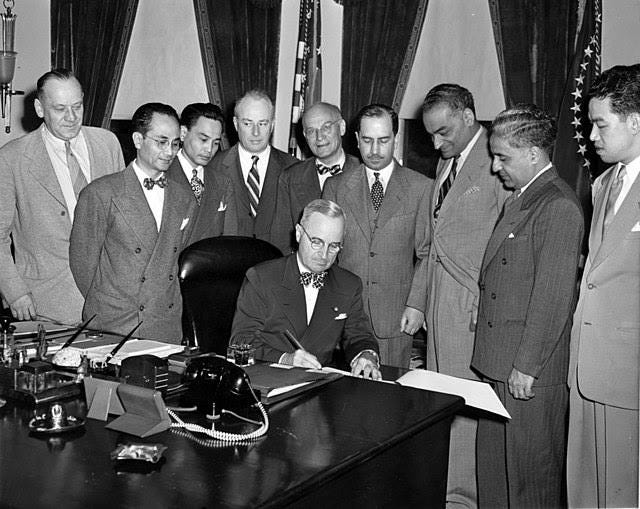
But perhaps it wasn’t all for nothing. A couple of decades later, the 1965 Immigration and Nationality Act would completely get rid of the “national origins” system that sets quotas by nationality and replace it with the current hemispheric quota system.33 The bill was sponsored in the House by none other than Representative Celler, now nearing the end of his career of fifty years, and indeed another term for the bill is the “Hart-Celler Act.”
Return to India
Following India’s Independence, the relevance of the League began to fade as India began sending her own diplomats to represent the country’s interests. JJ Singh still kept up a steady stream of public activity, publishing thirty-two letters in The New York Times between 1946-57, and more elsewhere.34 During Nehru’s visit to America in 1949, he was often coordinating events and appearances for the now-Prime Minister of India.35 But there is some indication that Nehru had moved on from the man he had once tasked with lobbying for independence. A 1951 memo from the U.S. Embassy in India reports Nehru as displaying “irritation” toward the unilateral representation of India’s interests in America by JJ Singh.36
The New Yorker profile in March 1951 reported how “Singh speaks more and more, with regret, of his lack of a family.”37 Later that year, he would marry Malti Saksena, daughter of an Indian diplomat, and they would have two boys born in the States. But in 1959, JJ Singh decides to forego the opportunity for citizenship he had himself fought for, and move back to India to raise his children in his home country that is now free from British rule. His farewell lunch before departure was quite the gathering. In attendance was the familiar cast of Representative Celler and the Luces, but also Supreme Court Justice William O. Douglas, then-Vice President Richard Nixon, and the New York City Mayor, Robert F. Wagner Jr..38 The New York Times, reporting on the gathering, stated,39
“Mayor Wagner has recognized the distinguished part that this unofficial envoy from India has played in the life of our community… He has been singularly successful in presenting the cause of his people to this country. One reason is that he has understood and liked Americans and made them like him. His urbanity, good humor, common sense, and patriotic devotion have endeared him to everyone who had reason to know him.”
Shaplen, Robert. "One-Man Lobby" The New Yorker, 24 Mar. 1951 (an extensive profile on Sirdar JJ Singh). https://www.newyorker.com/magazine/1951/03/24/one-man-lobby
Oberoi, Harjot. The Construction of Religious Boundaries : Culture, Identity, and Diversity in the Sikh Tradition. University of Chicago Press, 1994.
Ibid.
Shaplen, 1951.
Ibid.
Ibid.
https://www.mkgandhi.org/biography/arrest.htm
Shaplen, 1951.
Ibid.
Ibid.
Ibid.
https://www.saada.org/item/20110912-359
Shaplen, 1951
Ibid.
https://scroll.in/global/968375/the-story-of-one-mans-efforts-to-bring-indian-american-dreams-and-hopes-to-life
Shaffer, Robert. “J. J. Singh and the India League of America, 1945-1959: Pressing at the Margins of the Cold War Consensus.” Journal of American Ethnic History, vol. 31, no. 2, 2012, pp. 68–103. https://www.jstor.org/stable/pdf/10.5406/jamerethnhist.31.2.0068.pdf?refreqid=excelsior%3A1be35dba575948b47f25e56e5f1a5f87&ab_segments=&origin=&initiator=&acceptTC=1
Shaplen, 1951.
Ibid.
Shaffer, 2012.
Ibid.
Shaplen, 1951.
Sinha, Manish. “THE BENGAL FAMINE OF 1943 AND THE AMERICAN INSENSITIVENESS TO FOOD AID.” Proceedings of the Indian History Congress, vol. 70, 2009, pp. 887–93. https://www.jstor.org/stable/pdf/jj.4876484.13.pdf?refreqid=excelsior%3Ad6dfea4e469a5d68c9cb6eba6ded278f&ab_segments=0%2Fbasic_search_gsv2%2Fcontrol&origin=&initiator=&acceptTC=1
Shaplen, 1951.
Sinha, 2009.
Shaplen, 1951.
Sinha, 2009.
261 U.S. 204. (intepreting the Naturalization Act to exclude Indians from the definition of “white persons”). https://supreme.justia.com/cases/federal/us/261/204/
https://academic.udayton.edu/race/02rights/immigr05.htm
Shaffer, 2012
U.S. Senate. Committee on Immigration. To Permit the Naturalization of Approximately Three Thousand Natives of India (S. 1595, Sept. 13-14, 1944).
Ibid.
Shaplen, 1951.
https://www.migrationpolicy.org/article/fifty-years-1965-immigration-and-nationality-act-continues-reshape-united-states
Shaffer, 2012
Shaplen, 1951
Shaffer, 2012
Shaplen, 1951
Shaffer, 2012
“An Unofficial Envoy.” The New York Times. Feb. 18, 1959, https://www.govinfo.gov/content/pkg/GPO-CRECB-1959-pt3/pdf/GPO-CRECB-1959-pt3-2-1.pdf




